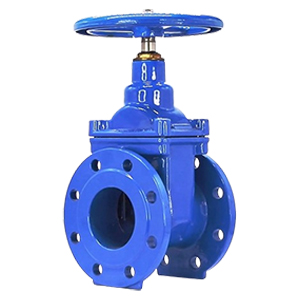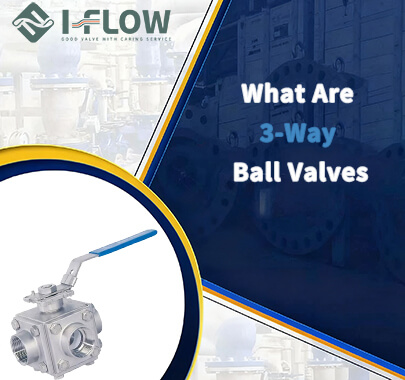Understanding Gate Valves and Their Working Principle
Gate valves are linear motion valves equipped with a gate-like disc that controls the flow of fluid. Unlike ball or butterfly valves, gate valves are designed to operate fully open or fully closed, making them ideal for on-off applications. When the gate valve is fully open, the gate is lifted, allowing fluids to flow freely through the pipeline. Conversely, lowering the gate blocks the flow entirely, providing a tight seal. This simple yet efficient mechanism minimizes resistance to flow, making gate valves ideal for high-flow and low-pressure drop applications.
Types of Gate Valves
Rising Stem Gate Valves: In these valves, the stem rises as the gate is raised. The stem’s movement provides a visual indication of the valve’s open or closed status, making it easy to monitor its position.
Non-Rising Stem Gate Valves: These valves are designed for spaces where the vertical movement of the stem would be impractical. The stem remains fixed, and the gate moves up and down inside the valve body.
Wedge Gate Valves: Known for their superior sealing properties, wedge gate valves use a wedge-shaped disc to ensure a tight seal, even under high pressure.
Applications of Gate Valves
Oil and Gas Pipelines: Gate valves play a critical role in isolating sections of pipelines for maintenance, emergencies, or shut-off operations. Their ability to seal tightly ensures safe transportation of hazardous fluids.
Water Treatment Plants: These valves control the flow of water through various stages of treatment, from raw water intake to treated water distribution, ensuring smooth and efficient operations.
Power Generation: In power plants, gate valves regulate steam and water flow, making them essential for the proper functioning of boilers, turbines, and cooling systems.
Chemical and Petrochemical Processing: Gate valves are used to manage the flow of corrosive or hazardous chemicals within pipelines, ensuring safety while maintaining optimal system performance.
Mining Operations: In the mining industry, gate valves help control the flow of water, slurry, and other fluids, contributing to efficient mining operations.
Advantages of Gate Valves
Full Flow Capacity: Gate valves provide a straight-through flow path when fully open, minimizing pressure loss and ensuring smooth, unrestricted flow.
Excellent Sealing: Gate valves provide a tight seal when closed, preventing leaks even under high-pressure conditions.
Versatility: Suitable for handling various types of fluids, gate valves can manage liquids, gases, and even slurries.
Low-Pressure Drop: The design of gate valves results in minimal resistance to flow, reducing pressure drops across the valve.
On-Off Functionality: Gate valves are primarily designed for on-off control, making them ideal for isolation and emergency shut-off applications.
Selecting the Right Gate Valve
Operating Conditions: The temperature, pressure, and flow rate of the fluid being controlled must align with the valve’s specifications.
Fluid Compatibility: The valve material should be compatible with the fluid being transported, especially when dealing with corrosive or abrasive substances.
Valve Size and Connections: Proper sizing is essential to ensure that the valve can handle the required flow and pressure.
Material of Construction: Gate valves can be made from various materials such as cast iron, stainless steel, or special alloys, depending on the application’s demands.
Actuation Needs: Depending on the application, gate valves can be manually operated or automated for remote control.
Industry Standards: Ensure that the selected valve complies with relevant standards, certifications, and regulations for the specific industry.
Maintaining Gate Valves for Optimal Performance
Routine Inspection: Check for any signs of wear, corrosion, or leakage. Ensure the valve is functioning properly and free from any obstruction.
Lubrication: Lubricate the moving parts regularly to prevent friction and ensure smooth operation.
Seal Inspection: Over time, seals may degrade, leading to leaks. Regularly inspect and replace seals as needed.
Flushing and Cleaning: Periodically flush the valve to remove debris or sediment that may cause the valve to stick or become blocked.
Follow Manufacturer Guidelines: Always adhere to the manufacturer’s recommended maintenance schedule and procedures to ensure the longevity and reliability of the valve.
Troubleshooting Common Gate Valve Issues
Leakage: This may occur due to damaged seals or improper valve alignment. Inspect and replace seals as needed or re-align the valve.
Sticking or Binding: If the valve is difficult to operate, clean it thoroughly to remove any foreign particles causing blockages.
Corrosion: In corrosive environments, ensure the valve is made from the right materials, such as stainless steel or coated alloys, to prevent damage.
Actuator Failure: If the valve is automated, inspect the actuator and its components for damage. Replace or repair faulty actuators as needed.
Innovations and the Future of Gate Valves
Smart Valves: Integration of sensors and remote monitoring capabilities allows operators to track valve performance in real time, improving system control and diagnostics.
Advanced Materials: The use of corrosion-resistant materials and coatings extends the life of gate valves, especially in harsh environments.
Enhanced Efficiency: Design improvements aim to further reduce pressure drops and increase flow efficiency, minimizing energy costs.

.png)
 en |
en |















